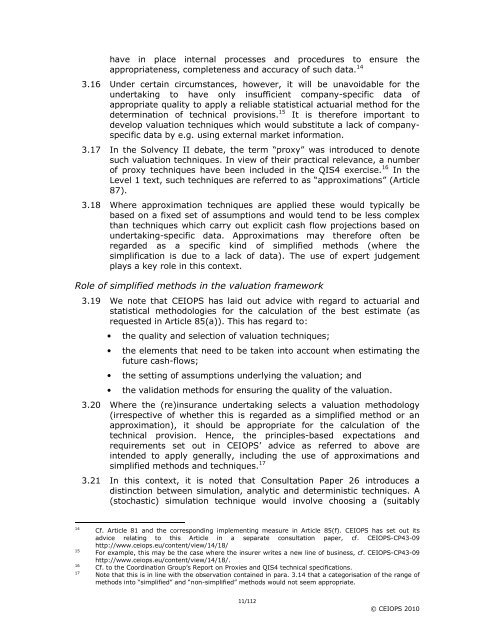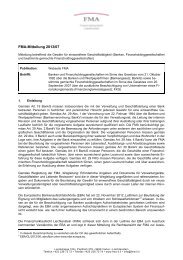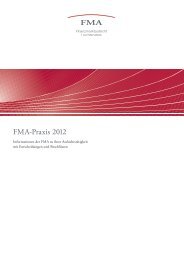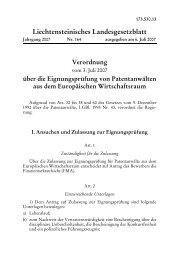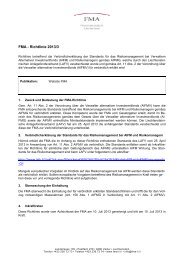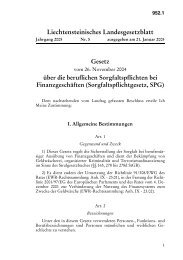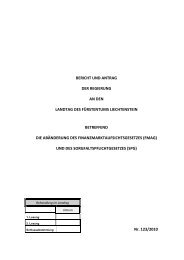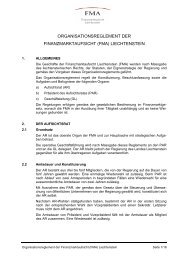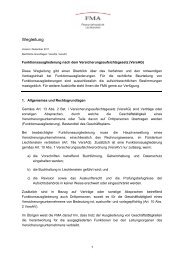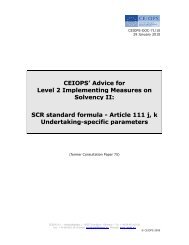CEIOPS' Advice for Level 2 Implementing ... - EIOPA - Europa
CEIOPS' Advice for Level 2 Implementing ... - EIOPA - Europa
CEIOPS' Advice for Level 2 Implementing ... - EIOPA - Europa
You also want an ePaper? Increase the reach of your titles
YUMPU automatically turns print PDFs into web optimized ePapers that Google loves.
have in place internal processes and procedures to ensure the<br />
appropriateness, completeness and accuracy of such data. 14<br />
3.16 Under certain circumstances, however, it will be unavoidable <strong>for</strong> the<br />
undertaking to have only insufficient company-specific data of<br />
appropriate quality to apply a reliable statistical actuarial method <strong>for</strong> the<br />
determination of technical provisions. 15 It is there<strong>for</strong>e important to<br />
develop valuation techniques which would substitute a lack of companyspecific<br />
data by e.g. using external market in<strong>for</strong>mation.<br />
3.17 In the Solvency II debate, the term “proxy” was introduced to denote<br />
such valuation techniques. In view of their practical relevance, a number<br />
of proxy techniques have been included in the QIS4 exercise. 16 In the<br />
<strong>Level</strong> 1 text, such techniques are referred to as “approximations” (Article<br />
87).<br />
3.18 Where approximation techniques are applied these would typically be<br />
based on a fixed set of assumptions and would tend to be less complex<br />
than techniques which carry out explicit cash flow projections based on<br />
undertaking-specific data. Approximations may there<strong>for</strong>e often be<br />
regarded as a specific kind of simplified methods (where the<br />
simplification is due to a lack of data). The use of expert judgement<br />
plays a key role in this context.<br />
Role of simplified methods in the valuation framework<br />
3.19 We note that CEIOPS has laid out advice with regard to actuarial and<br />
statistical methodologies <strong>for</strong> the calculation of the best estimate (as<br />
requested in Article 85(a)). This has regard to:<br />
• the quality and selection of valuation techniques;<br />
• the elements that need to be taken into account when estimating the<br />
future cash-flows;<br />
• the setting of assumptions underlying the valuation; and<br />
• the validation methods <strong>for</strong> ensuring the quality of the valuation.<br />
3.20 Where the (re)insurance undertaking selects a valuation methodology<br />
(irrespective of whether this is regarded as a simplified method or an<br />
approximation), it should be appropriate <strong>for</strong> the calculation of the<br />
technical provision. Hence, the principles-based expectations and<br />
requirements set out in CEIOPS’ advice as referred to above are<br />
intended to apply generally, including the use of approximations and<br />
simplified methods and techniques. 17<br />
3.21 In this context, it is noted that Consultation Paper 26 introduces a<br />
distinction between simulation, analytic and deterministic techniques. A<br />
(stochastic) simulation technique would involve choosing a (suitably<br />
14<br />
Cf. Article 81 and the corresponding implementing measure in Article 85(f). CEIOPS has set out its<br />
advice relating to this Article in a separate consultation paper, cf. CEIOPS-CP43-09<br />
15<br />
http://www.ceiops.eu/content/view/14/18/<br />
For example, this may be the case where the insurer writes a new line of business, cf. CEIOPS-CP43-09<br />
http://www.ceiops.eu/content/view/14/18/.<br />
16<br />
Cf. to the Coordination Group’s Report on Proxies and QIS4 technical specifications.<br />
17<br />
Note that this is in line with the observation contained in para. 3.14 that a categorisation of the range of<br />
methods into “simplified” and “non-simplified” methods would not seem appropriate.<br />
11/112<br />
© CEIOPS 2010


